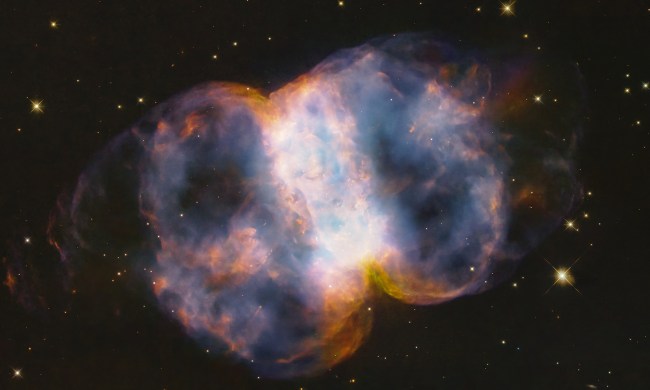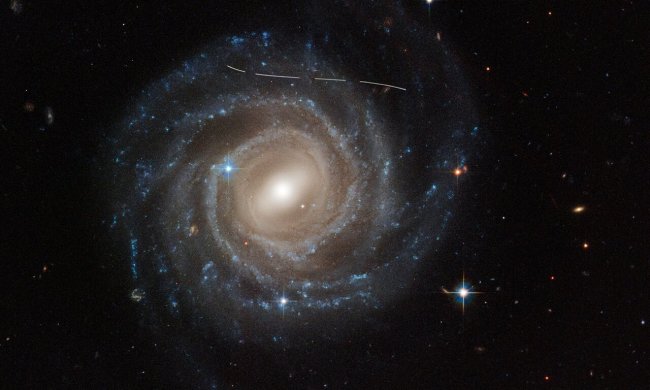This week’s image shared by the team from the Hubble Space Telescope shows two galaxies that appear to be overlapping. But unlike last week’s Hubble image, which showed two galaxies interacting, this week’s image shows two galaxies that are actually light-years apart.
The two galaxies here are NGC 4496A, which is 47 million light-years from Earth, and NGC 4496B, which is much further away at 212 million light-years distance. The two happen to be aligned so they appear to be overlapping because they are both in the same direction from Earth, but they do not actually interact at all.

This lining up of galaxies can be helpful for astronomers performing certain types of research though. “Chance galactic alignments such as this provide astronomers with the opportunity to delve into the distribution of dust in these galaxies,” Hubble scientists write. “Galactic dust – the dark tendrils threading through both NGC 4496A and NGC 4496B – adds to the beauty of astronomical images, but it also complicates astronomers’ observations. Dust in the universe tends to scatter and absorb blue light, making stars seem dimmer and redder in a process called ‘reddening.'”
You might have heard of redshift, where light from objects which are moving away from us is lengthened in wavelength and therefore is shifted to the red end of the spectrum. That phenomenon is useful for measuring the expansion of the universe. The effect of reddening, however, is something quite different.
“Reddening due to dust is different from redshift, which is due to the expansion of space itself,” the Hubble scientists explain. “By carefully measuring how dust in the foreground galaxy affects starlight from the background galaxy, astronomers can map the dust in the foreground galaxy’s spiral arms. The resulting ‘dust maps’ help astronomers calibrate measurements of everything from cosmological distances to the types of stars populating these galaxies.”



